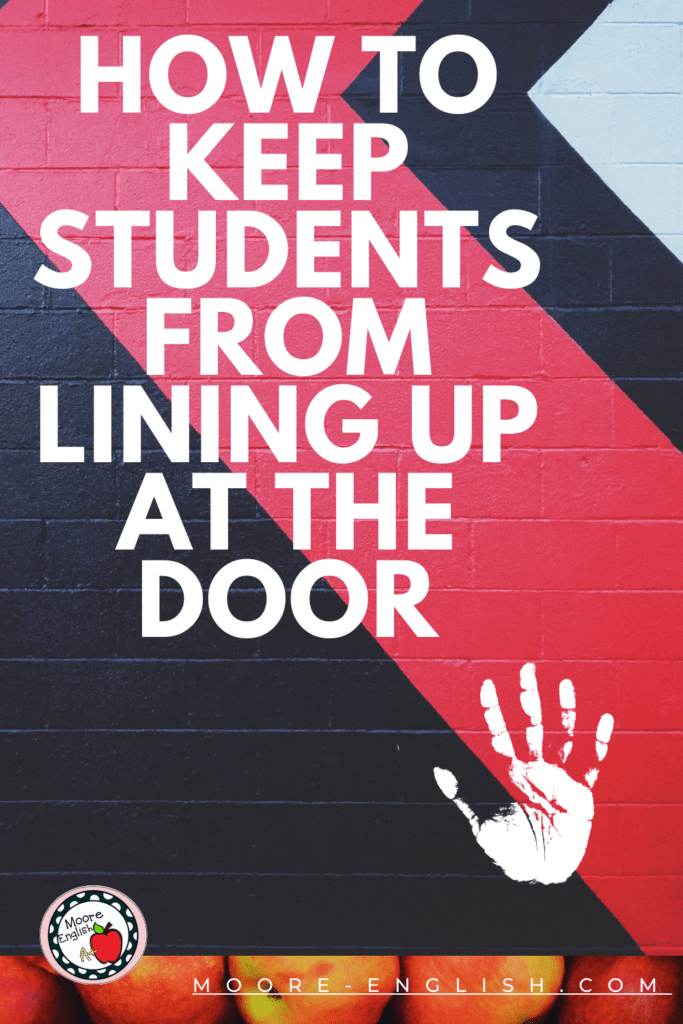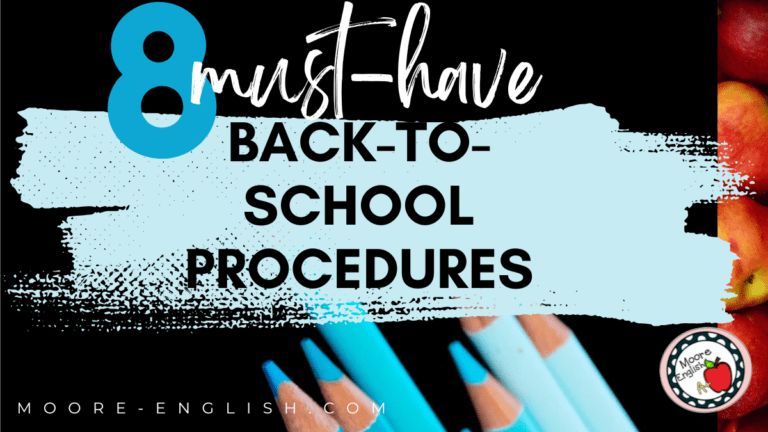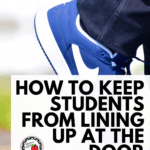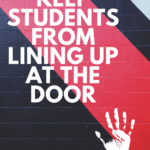If class ends at 11:45, my students are itching to pack up at 11:40 and are lining up at the door a minute later. They complain about all of their classes (mine included), so what’s the rush? A hallway monitor isn’t going to let them linger in the corridor. Where is the fire?
I don’t know why students swarm the door at the end of the block, but I also remember doing the same thing when I was in high school.
Over the years, students lining up at the door has become one of my great pet peeves. Here are some strategies to prevent students from lining up.
This post this post may contain affiliate links. Please read the Terms of Use.
Stop Lining Up with Clear Expectations
Like most classroom behaviors, students lining up persists when we let it persist. I have to admit that some years I am better focused on this behavior than others. In the years when I have been the best at preventing the Great Line Up, I have had clear Exit Procedures in place.
In the time of COVID, exit procedures have included spraying down desks and sanitizing hands once more. Having that procedure in place created a clear routine at the end of class and helped students stay away from the door. As that routine faded toward the end of the 21-22 school year, I noticed students creeping back toward the door.
In other words, when my expectations and procedures weakened, an undesirable behavior strengthened.
Being Frank with Students
As a student, I remember not understanding why my teachers were so frustrated when we started lining up at the door. Toward the end of the year, when lining up became more problematic, it became important to be frank with students.
To this end, I asked students to think-pair-share ideas about why lining up at the door is a problematic behavior. With a little coaching, students were able to determine all of the right reasons:
- Lining up is disrespectful.
- Lining up implies that all the learning is done!
- When students line up, there’s greater chance for chicanery.
- In a time of COVID, pressing against one another isn’t the best classroom hygiene.
Activities to Prevent Lining Up
In addition to a clear set of Exit Procedures, I try to keep a series of sponge activities on hand for times when students might be tempted to line up at the door. (In the interest of transparency, some years and some classes I’m better about this than others. I’m human, too.)
Classroom Goals and Competitions
Some of my classes have been motivated by extrinsic goals like stickers or candy. A few years ago, I had a group that really responded to Classroom Olympics. Each month they would choose a behavior goal to work on (no tardies, not lining up at the door, taking iReady seriously, etc.) As a class, we would set a goal for the week or month. Goals achieved over a larger period of time earned better rewards. One thing that I liked about this strategy was that we were constantly engaged in a conversation about classroom behaviors. It also forced me to constantly revisit and reaffirm classroom expectations and procedures.
Sponge Activities for Prevent Lining Up
Not all of my classes have had the long-term focus required for Classroom Olympics. For those groups, more traditional sponge activities have been the best bet. These are some of my favorites:
- Board Races are a classic sponge activity. This works best when I have a high-energy class that responds well to movement. I keep a stack of vocabulary and figurative language questions handy for days when we use board races.
- Similarly, task cards are another good sponge activity. I can give each student a task card for the last 5 minutes of class. I can also ask all students to address a common task card. Students can answer their task card on a sticky note and pass it in as an exit ticket. Grab my favorite task cards today!
- The Final Question is another strategy I’ve used to keep students from lining up at the door. In the last 2 minutes of class, I put a question related to the day’s lesson up on the board. Sometimes the question is recall, but other times it’s a multiple-choice question. Students use a sticky note to answer the question and explain their answer. I collect these as students walk out.
The Metacognitive Moment
Some lessons don’t need sponge activities because they time out perfectly. (Don’t we wish that this was all lessons?) However, sometimes I need to get honest feedback from students. When this happens, I build a Metacognitive Moment into my instruction. Especially when a lesson has introduced a new concept or retaught an old concept, I will ask students what worked for them or what didn’t work for them in a lesson. Students put that on a sticky note and pass it in as they walk out.
I also like to ask students to “score” their performance in class. Sometimes students score behavior, but other times students self-assess their understanding of a concept. When we do this, I give students a thought stem. For example, I deserve a _____ /10 in today’s discussion because…
Any combination of these activities is a great way to keep students from lining up at the door. How do you prevent this annoying behavior in your classroom?















